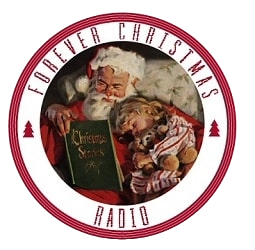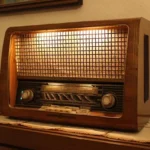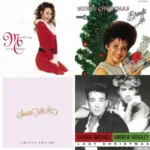The History of Christmas Internet Radio: How Streaming Transformed Holiday Listening
The way people listen to Christmas music has changed dramatically over the last two decades. For much of the 20th century, terrestrial FM stations dominated the holiday season with festive programming—switching to all-Christmas music for a few weeks around December. But as the internet reshaped music consumption, a new era emerged: Christmas internet radio. From the earliest streaming experiments to today’s vast ecosystem of global online stations, the rise of holiday streaming reflects evolving technology, shifting consumer habits, and the timeless appeal of seasonal music.
Early Days of Internet Streaming (1990s)
The roots of Christmas internet radio stretch back to the mid-1990s, a time when streaming audio over the internet was a bold new frontier. The launch of RealAudio in 1995 marked the first practical way to deliver live audio streams to internet users over dial-up connections. While early streams were low bitrate and highly prone to buffering, they represented a seismic shift from traditional broadcast.
By the late 1990s, pioneering hobbyists and broadcasters began experimenting with themed streams, including seasonal holiday music. These early “stations” were often rudimentary—looped playlists hosted on personal computers or small servers. Despite crude technology, these efforts demonstrated an important potential: Christmas music could now travel beyond local FM coverage, reaching listeners worldwide.
Notably, many early Christmas streams were informal, community-driven projects. Enthusiasts created these streams partly out of passion for the season and a desire to share the holiday spirit beyond geographic boundaries. It was the first glimpse of a digital Christmas radio community that would expand rapidly in the decades to come.
The Boom of Internet Radio Portals (2000s)
The 2000s ushered in major technological improvements. Broadband internet became more widespread, enabling more stable and higher-quality audio streaming. This era also saw the rise of key internet radio platforms and protocols such as SHOUTcast (introduced in 1998 by Nullsoft) and Live365 (founded in 1999). These platforms democratized radio broadcasting, allowing anyone with an internet connection to create a 24/7 streaming channel without needing a traditional FM license.
Christmas internet radio quickly emerged as one of the most popular seasonal categories on these platforms. Suddenly, listeners could tune in to non-stop holiday music for days or weeks at a time—far beyond the typical limited window of terrestrial holiday formats. This convenience changed listening habits. Fans could start celebrating Christmas early or extend the festivities well past December 25.
The variety also exploded. Thousands of niche Christmas stations popped up, each catering to distinct tastes—from vintage crooners like Bing Crosby and Nat King Cole to contemporary pop stars and smooth jazz instrumental collections. This fragmentation was unique to internet radio, as terrestrial stations generally aimed for a broad audience.
The 2000s also marked the beginning of international Christmas radio audiences. For example, expatriates or travelers could access Christmas streams from their home countries or discover new holiday sounds from other cultures—a global holiday experience previously impossible.
The Rise of Dedicated Holiday Streams (2010s)
By the 2010s, Christmas internet radio had become a mainstream part of the holiday soundscape, helped by the proliferation of smartphones, smart speakers, and apps. Services like TuneIn, iHeartRadio, and Radio.com aggregated thousands of stations, making it effortless for listeners to find and switch between Christmas channels.
During this time, major terrestrial broadcasters embraced the digital space. Networks such as iHeartMedia launched exclusive online-only holiday streams like “iHeart Christmas Classics” or “iHeart Country Christmas.” These digital extensions allowed radio brands to extend their seasonal programming far beyond their traditional broadcast footprints and to experiment with different formats and themes.
Importantly, these online holiday stations were no longer restricted by broadcast schedules or regulations, allowing many to operate 24/7 for months leading up to and even after the holidays. This availability catered to listeners who wanted holiday music year-round or at unusual times.
The 2010s also saw improvements in streaming quality and interactivity. Some Christmas stations began incorporating listener requests via social media or integrating curated playlists with live DJs, merging the benefits of traditional radio with digital convenience.
Streaming Era: Personalized and On-Demand (2020s)
In the 2020s, Christmas internet radio exists alongside dominant on-demand streaming services such as Spotify, Apple Music, and YouTube Music. While on-demand allows users to craft their perfect holiday playlist, live internet radio retains a unique appeal by fostering a sense of shared listening and community.
Modern internet radio platforms now offer highly specialized holiday channels. Whether it’s “Jazz Christmas,” “Country Christmas,” “Classic Christmas Hits,” or decade-themed streams like “’80s Christmas,” listeners can choose stations that suit their personal holiday vibe. Many streams are commercial-free and available globally on every connected device.
Smart speakers have further transformed Christmas listening habits. Asking Alexa, Google Assistant, or Siri to “play Christmas radio” typically triggers a curated internet stream rather than a local FM broadcast. This ease of access has integrated Christmas internet radio into daily routines, car trips, and social gatherings, reinforcing it as a key part of modern holiday traditions.
Moreover, new interactive features like chat rooms, integrated song voting, and social sharing continue to evolve the experience, blending nostalgia with cutting-edge tech.
Why Christmas Internet Radio Became So Popular
The success of holiday internet radio isn’t just about technology—it’s about adapting to listener needs in an increasingly digital, connected world. Here are the main reasons Christmas internet radio thrives:
- Accessibility: Listeners anywhere in the world can tune in with no geographic restrictions, overcoming limitations of terrestrial signals.
- Variety: The sheer volume and specialization of channels surpass anything local radio can offer—from traditional carols to niche genres and rare holiday tunes.
- Convenience: With one click or voice command, listeners can instantly access a wide range of holiday music on phones, computers, smart speakers, or cars.
- Year-Round Options: Many Christmas stations run 24/7 all year long, catering to superfans who want holiday music beyond the traditional season.
- Global Reach: Internet streaming enables people far from home—expats, travelers, or diaspora communities—to enjoy familiar Christmas sounds and traditions wherever they are.
- Community: Live internet radio preserves the communal spirit of radio listening, with live DJs, seasonal specials, and shared experiences that on-demand playlists can’t replicate.
Looking Ahead
As technology continues to evolve, Christmas internet radio will likely remain a beloved fixture of the holiday season. Innovations like AI-curated playlists, immersive audio experiences, and expanded interactivity may further enhance how we experience holiday music. But at its heart, the rise of Christmas internet radio tells a story about how tradition adapts to new technology—preserving the warmth and joy of the holidays while reaching more ears around the globe than ever before.









